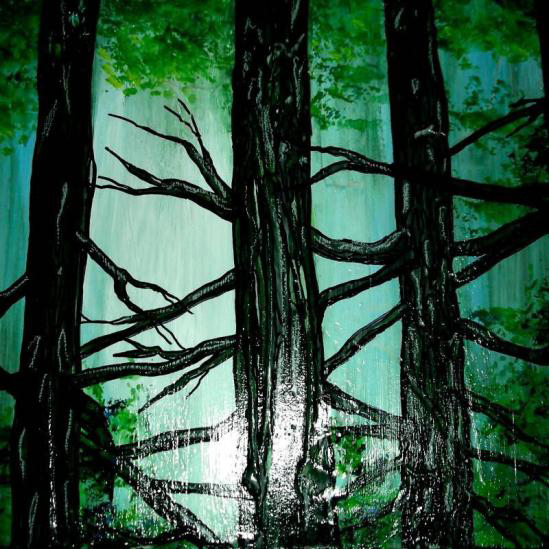You will need to make modifications and adjustments to the plan to meet the developmental needs of your students and curriculum requirements.This plan is written to meet the needs of IB and AP Art.
Goal (Terminal Objective):
Students will understand how ground and media choices will affect the surface quality of their paintings.
Objective:
Students will compose and build a textured surface and embellish the surface with glazes, acrylic paint, oil pastels, and Metallic Markers.
National Standards:
Visual Arts Grades 9-12 Content Standard 1: Understanding and applying media, techniques, and processes
Visual Arts Grades 9-12 Content Standard 2: Using knowledge of structures and functions
Visual Arts Grades 9-12 Content Standard 3: Choosing and evaluating a range of subject matter, symbols, and ideas
Visual Arts Grades 9-12 Content Standard 4: Understanding the visual arts in relation to history and culture
Visual Arts Grades 9-12 Content Standard 5: Reflecting upon and assessing the characteristics and merits of their work and the work of others
Visual Arts Grades 9-12 Content Standard 6: Making connections between visual arts and other disciplines (Cross Curriculum Connections: Language Arts and Social Studies)
Purpose:
Students will investigate artists and techniques and create a textured landscape painting.
New Vocabulary:
drywall mud, embellish, glaze, illuminate, luminosity, masonite, texture
Materials:
Masonite or hardboard, drywall mud compound, spackling knife or assorted combs, newspaper, black permanent markers to label back side of the masonite boards, assorted foam brushes, foam plates to use as palettes, sketchbooks/research workbooks, and hair dryers to speed drying time
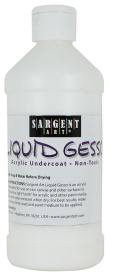
#22-8801 16 oz. Extra Thick Liquid Gesso

#24-2499 16 oz. 12 pcs. Acrylic Paint

#22-8815 16 oz. Acrylic Matte Medium
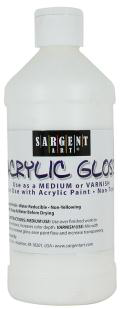
#22-8808 Acrylic Gloss & Varnish
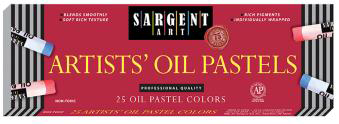
#22-2018 Standard Size Oil Paltel

#22-1507 Metallic Fine Point Peggable Garton Markers

#22-8813 16 oz. Pearlesent Medium

#22-7244 144 ct. Graphite Pencils

#22-1565 4 ct. Black Fine Bullet Tip Permanent Markers

#56-3101 40 ct. Flat Jumbo Brush Best-Buy Set

#23-5027/#23-1535 60 Sheet Sketch Pad/Pirmary ruled Hard Cover Composition Book
Time:
810 (50minute) classes as well as open studio time
Introduction and Motivation (Set):
Analyze visuals of the botany studies and journal drawings of Durer and da Vinci that involve linear and textural details. Discuss their use of structural lines and how the artists indicated and built forms and mass in their drawings. Then show them completed examples of several tree landscapes using glazing and acrylic paints on masonite.
Instruction:
After viewing a power point presentation of the preparation of the masonite, the teacher will do a modeled demonstration of sanding and applying mud to the masonite panel and will show examples of completed pieces ready for painting. This power point can beloaded onto a classroom computer for reference or to assist students who are absent or late for class.
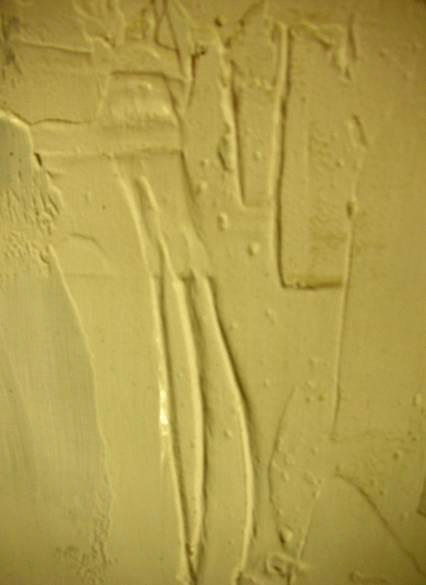
Detail of Texture on Drywall Mud and Gesso Surface
The teacher will then give another power point that gives an overview of artists (both contemporary and through the ages) who have used trees as the focal point for landscape painting (Great Masters Durer, da Vinci, Monet, van Gogh, and contemporary artists such as Robert Vander Zee and Trish Thompson). Students will investigate at least three of their favorite artists and record information about them, their media, and/or their painting technique in their sketchbooks/research workbooks. Students will select one artist or technique and execute a painting done in a similar manner. After analyzing the structural makeup of actual trees or photographs of tree forms, they must record both the composition and color scheme they intend to use for their painting in their sketchbook/research workbooks. A rubric of how the project will be assessed will be discussed and recorded and posted on the wall of the studio for easy and accessible reference.
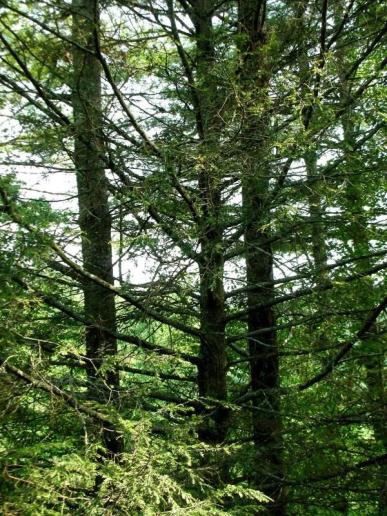
Photo Taken by Miles of the Dying Hemlock Trees in Cashiers, North Carolina
Activities:
(1) Guided Practice:
- Students will follow the steps demonstrated on the power point presentation to prepare their masonite board. They will sand the edges of the board and gessoit.
- After doing their artist research and developing a landscape composition of trees in their sketchbooks/research workbooks, students will apply a thick layer of drywall mud to the masonite to the areas where they want to create their landscape focal point oftrees.
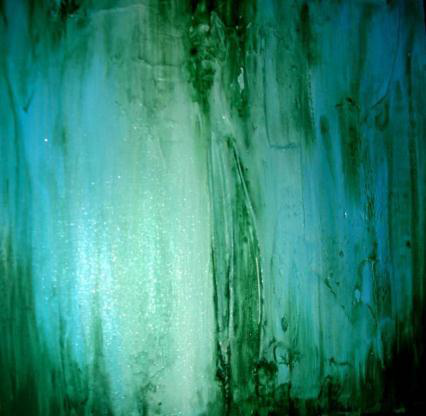
Glaze Layer on Painted Gesso Board
(2) Independent Practice and Check forUnderstanding:
- Students will select a light source for their composition, record it in their sketchbook/research workbooks, and glaze that area of the painting with several light layers of acrylics mixed withglaze.
- Students will build the mass, textures, and forms of the trees with layers of diluted acrylic paints. They will add a layer of clear medium between the layers of acrylic paint to create more depth to their textures and theirground.
- Students will use oil pastels and/or Liquid Metallic Markers to emphasize the texture of the trees and selected areas of theirlandscapes.
- The teacher will circulate around the studio recording student progress and their exchange of ideas and techniques with theirpeers.
- The teacher will assist and reinforce students with the execution and completion of theirwork.
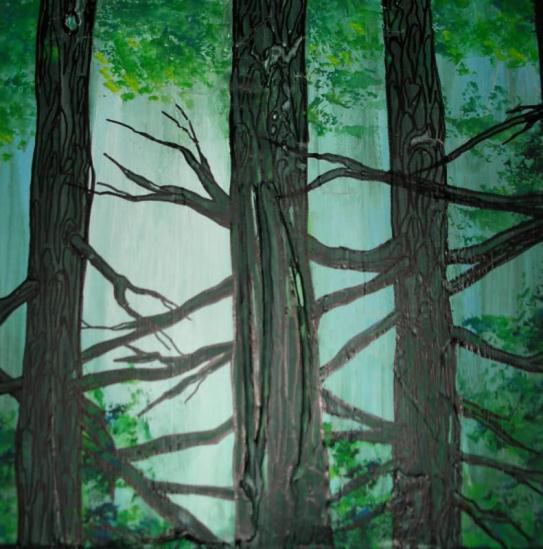
Dark Bark Layers to emphasize Texture
(3) Closure:
- Students will follow the timeline allotted for the project, completing the painting and presenting it on the duedate.
- Students will label the pages in the sketchbook/research workbook that are involved with this project and submit it (every other week for sketchbook/ research workbook check andgrade).
- Students will tape the rubric/checklist to the back of their competedpainting.
- Students will write a reflective critique of their work in their sketchbooks/research workbooks and present it with their completed project for assessment. It must include:
- Students will use the digital camera to take a jpeg of their project and keep it in the student folder on the computer for their text panels and portfolio. These will be presented as a power point presentation and burned to a CD as a part of their finalgrade.
*the artist who influenced their work
*explanation of techniques used in painting
*art elements and principles and how and why they were used
*craftsmanship
*what could be done to improve it
Evaluation:
Written documentation, research, and drawings in the sketchbooks/research workbooks and rubrics are graded, as well as the completed project.
Level One — The layered painting and written documentation is technically accomplished and shows a strong sense of design, inventive and evocative, in layout of the composition using the elements and principles of design. Strong investigation, experimentation, and risk taking with the media are evident. The work demonstrates excellent quality.
Level Two — The layered painting and written documentation indicates sophistication and complex decision making with some success in the layout of the composition using
the elements and principles of design. The work demonstrates successful research, experimentation, and risk taking. The technique and quality of the work is generally strong.
Level Three — The layered painting and written documentation show a limited execution of design without much success, with an awkward use of media and composition.
Evidence of research and investigation and risk taking is simplistic. The technique and quality of the work is of weak quality.
Level Four — The layered painting and written documentation are undeveloped and the use of design is questionable. Evidence of research, investigation, and risk taking is lacking, with little evidence of decision making. The technique and quality of the work is of poor quality.
Extension:
These layered painting techniques can be applied to any painting that involves areas of texture in the composition. Mark making and surface manipulation can be accomplished with knives, combs, and trowels. Care must be taken in the application of the drywall mud to the surface of the masonite. If you use too much, cracks will develop.
Resources:
Use WIKIPEDIA to start your research and documentation. Cite sources following MLA format. Then research the links provided, Google, Artcyclopedia, Vivisimo, etc.
After researching the artists listed above, also investigate these sites:
http://theartists.org/artists
http://www.billpuryear.com/paintings
http://www.galleryplanb.com/artists/robvanderzee
http://www.redstalliongallery.com
Textbooks and Resource Library Books:
Creative Artist, LeLand, Nita, 1990, North LightPublications
Creative Composition & Design, Dews, Pat, 2003, North LightPublishers
Design Basics, Lauer &Pentak, 2002, WadsworthPublishers
Design Synetics, Roukes, Nicholas, 1988, DavisPublications
Design Synetics, Roukes, Nicholas, 1988, DavisPublications
Drawing, A Contemporary Approach, 2004, Thomson WadsworthPublishers
Drawing From Life, Brown & McLean, 2004, Thomson Wadsworth Publishers
Exploring Visual Design, Gatto, Porter &Selleck, 2000, DavisPublications
Painters’ Wild Workshop, Loscuttoff, Lynn, 2002, Rockport Publishers,Inc.
The Visual Arts Companion, Smolucha, 1996, Prentice HallPublishers
Art Consultant



